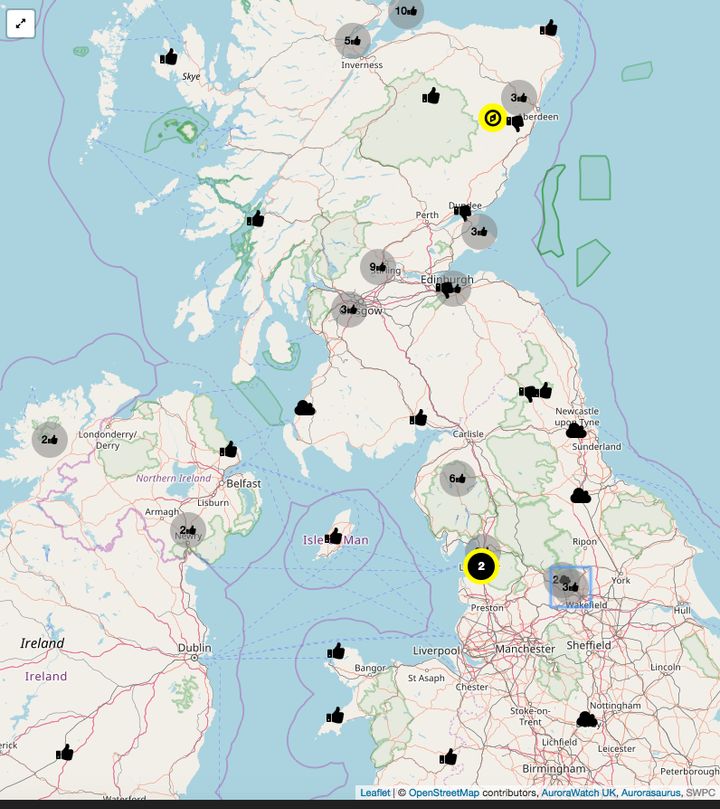Many people plan entire holidays and travel for thousands of miles in the hope they might catch a glimpse of the dazzling Northern Lights.
But now the stunning natural phenomenon has shown up on our doorsteps after a series of sightings across the British Isles last night, shared by amateur stargazers on social media.
The activity of the Aurora Borealis peaked on Tuesday night, at around 18.30 (the sun set at 16.30 in Glasgow on 7 November) and continued for several hours.
Most of the action happened across northern and central Scotland, and north Wales, but reached as far south as Wolverhampton.
In Cornwall and Cambridge, it was reported that there was too much cloud for anything to be seen.
This information was recorded by Aurora Watch UK in a citizen science project that helps builds an interactive map of sightings for experts and novices to use in the future.

On the map the upwards thumb symbols indicate a sighting took place in that area, and the downwards thumbs indicate that people were looking but were not lucky enough to see anything.
This could be due to cloud cover or light pollution in that area.
The Aurora Watch UK service is provided by Space Physicists at Lancaster University, and also monitors geomagnetic activity and share any insights and predictions about future sightings and the best locations to catch the lights.
The Northern Lights are not visible from the UK all of the time and nor is it regularly visible at a specific time.
Exactly when an aurora may be visible from the UK is all down to the complex interactions between the solar wind and the Earth’s magnetic bubble known as the magnetosphere.
Why do the Northern Lights happen?
The light show is caused by a massive flare from the Sun, and the charged particles from the flare then collide with the Earth’s atmosphere causing ionisation, which in turn creates the huge rippling blankets of colour to appear in the sky.
Commonly seen only in the ‘Auroral Zone’ the Northern Lights can sometimes be witnessed further south if a Solar flare collides with the planet.
